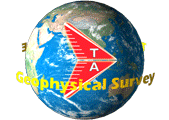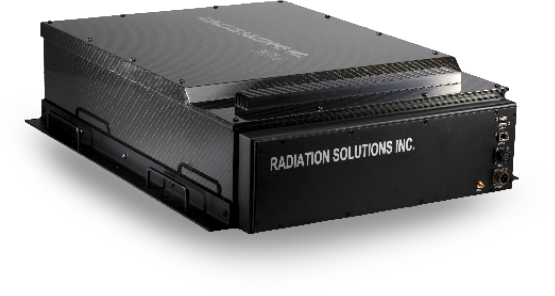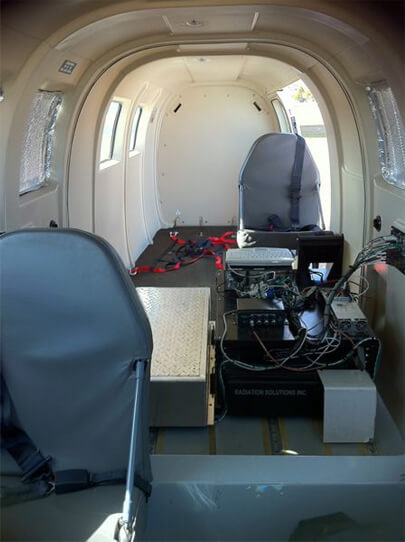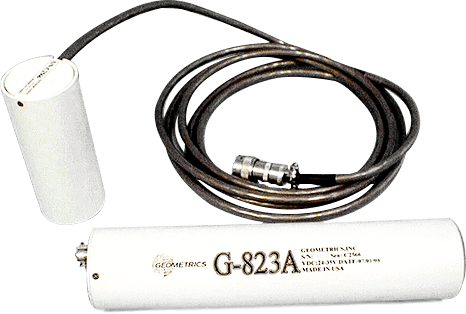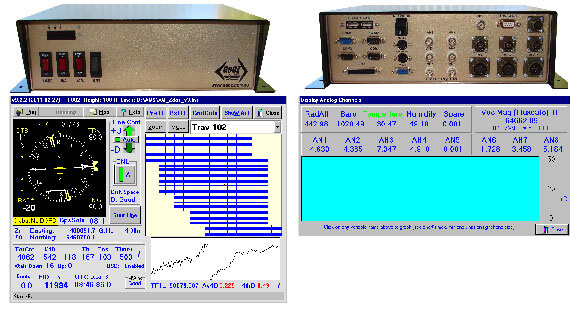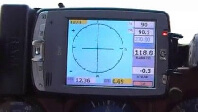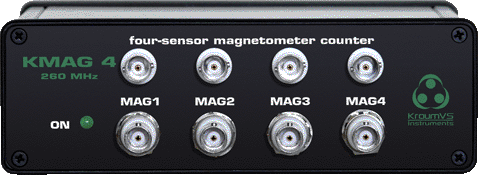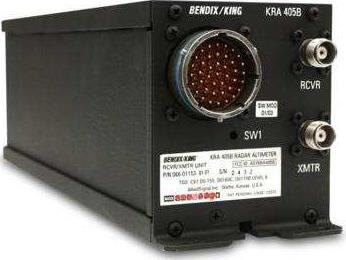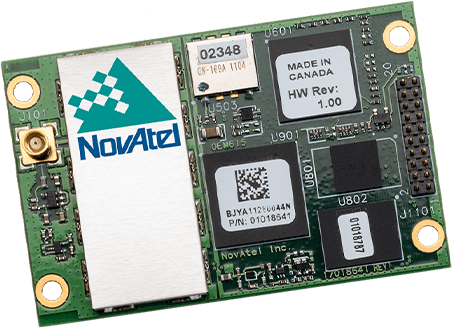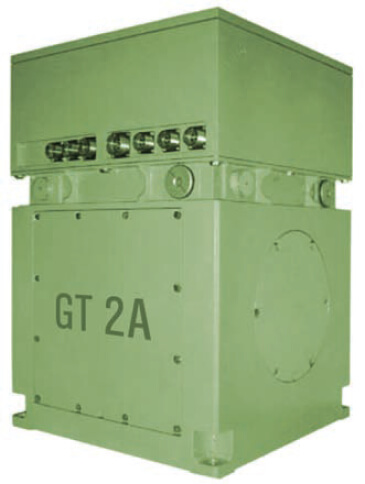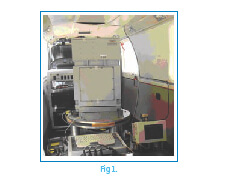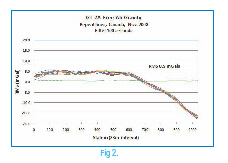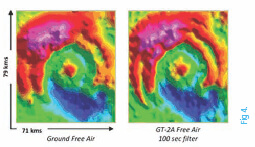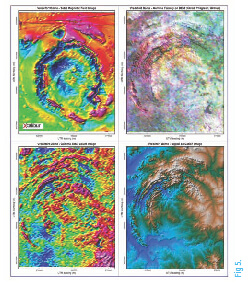1. NO TEST SOURCES needed for SYSTEM STARTUP STABILIZATION
In the past most users had Cesium sources for in field start-up stabilization but with the ever increasing difficulty of radioactive source shipments, a better solution was needed. The RS500 system uses MULTIPLE-PEAK Gain Stabilization on natural isotopes. In all locations on the earth’s surface there are varying amounts of K, U and Th in the rocks/soils. The RS500 uses very advanced algorithms to utilize these spectral signatures to achieve fast high quality stabilization for system start up. The system uses statistical techniques to verify correct stabilization by computing spectral Quality-of-Fit to automatically advise users when the system is ready to go. Data tests shows that GOOD fit could be achieved in typically 20 seconds under normal low background conditions (30 Gy/h) and a VERY-HIGH quality fit within a few minutes under essentially any geological conditions.
2. NO TEST SOURCES needed for SYSTEM IN-FLIGHT OPERATION
The same analysis algorithms described above are also used for in-flight stabilization. The use of MULTIPLE-PEAKS for Gain Stabilization ensures highest confidence and quality performance under any local geological conditions.
3. NO TEST SOURCES needed to VERIFY SYSTEM PERFORMANCE
A common requirement in geophysical Surveys is the need to carry out GROUND CHECKS using Uranium and Thorium sources to prove that system performance is being maintained. These sources are also very problematic for legal transportation. The RS500 implements a special feature that has “perfect” spectra in memory for the Potassium, Uranium and Thorium spectra that are geologically prevalent. Prior to flight, as the system performs it’s automatic pre-flight stabilization described in item (1) above – at the automatic end of this test the accumulated spectra are fitted to the “perfect” spectra in memory and a Quality-of-Fit for K, U and Th is determined. These data are used to PROVE that system performance is within the required ranges. RSI will develop a peer-reviewed paper to explain this technological advance that can be used to satisfy local in-field Customer Quality control requirements.
4. SPECTRAL DATA STORAGE
The RS500 can be sampled at any setting between 0.1sec/sample and 10 sec/sample but in normal Geophysical applications a 1 sec data rate is normally recommended, however very low ground spacing users may operate at a higher rate. A typical system operates with 9 xtals (8 DOWN and 1 UP). The RS500 uses advanced data compression methods to compress data typically by 10x. For this reason RSI recommend that the RAW data from ALL xtals are recorded in the data system. A 9 xtal system operated at 1/sec would generate fully compressed 1024 channel spectral data for ALL xtals of typically 7MB/HOUR, a relatively trivial data storage requirement for today’s data systems (note that currently at 1 sec data – recording UP and DOWN uncompressed data = 14MB/HOUR!).
5. SPECTRAL DATA VALIDATION
The huge advantage of ALL SPECTRA data storage is that RSI can provide the user with a Utility program that reads all the COMPRESSED data stored, analyses ALL individual spectra for Quality-of-Fit and provides the user with this result for QC control. If ALL spectra are OK the Utility then sums them to provide the UNCOMPRESSED spectra for summed DOWN and UP xtals for user data analysis.
6. SPECTRAL DATA RECOVERY
In the event that the analysis process shows serious data errors on any of the spectra, RSI can provide data tools and services to remove the problem data PRIOR to summing to avoid data contamination. In many cases RSI can also help the users resample the BAD data to correct it and permit the majority of the bad data to be reused.
These 2 features (5+6) means that re-flies for bad data quality should be almost eliminated.

